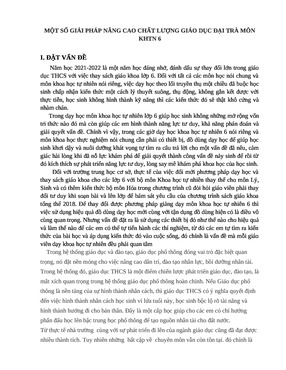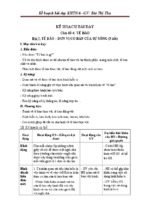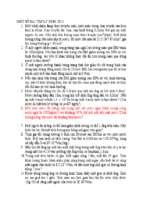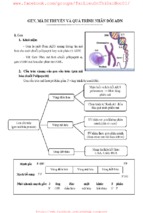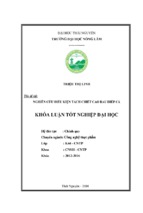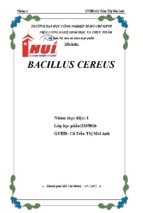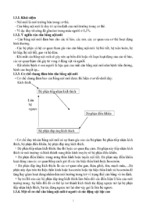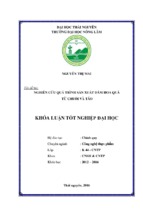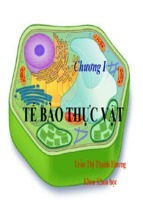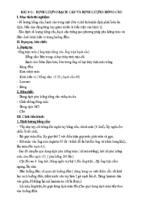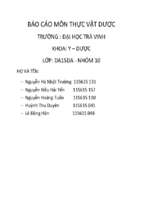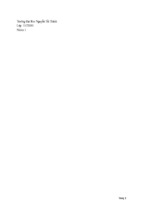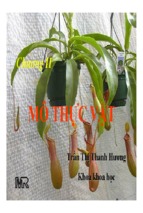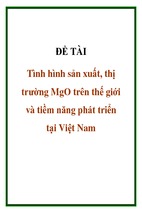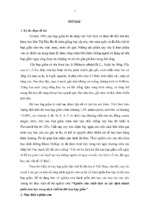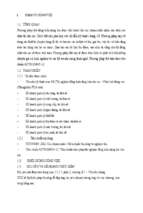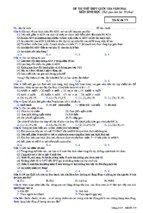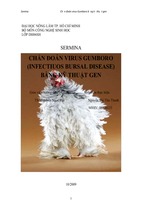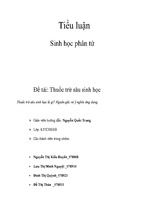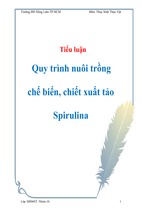Southern Blot Analysis
Using Biotin-Labeled Probes
Developed for:
Aerius, and Odyssey® Family of Imagers
Please refer to your manual to confirm
that this protocol is appropriate for the
applications compatible with your
Odyssey Imager model.
Published January 2006. Revised June 2012.
The most recent version of this pack insert is posted at
http://biosupport.licor.com/support
Page 2 – Southern Blot Analysis Using Biotin-Labeled Probes
Contents
Page
I.
Required Reagents . . . . . . . . . . . . . . . . . . . . . . . . . . . . . . . . . . . . . . . . . . . . .2
II.
Making Solutions for Southern Blot Analysis . . . . . . . . . . . . . . . . . . . . . . .2
III.
Southern Blotting Methods . . . . . . . . . . . . . . . . . . . . . . . . . . . . . . . . . . . . . .3
IV.
Biotin Probe Labeling Using PCR Amplification . . . . . . . . . . . . . . . . . . . . .3
V.
Southern Blot Hybridization . . . . . . . . . . . . . . . . . . . . . . . . . . . . . . . . . . . . .5
VI.
Biotin Detection for Southern Blots . . . . . . . . . . . . . . . . . . . . . . . . . . . . . . .6
VII. Troubleshooting Guide . . . . . . . . . . . . . . . . . . . . . . . . . . . . . . . . . . . . . . . . .8
I. Required Reagents
Southern Blotting and Hybridization
•
•
•
•
•
Biodyne® B Nylon Membranes (Pall, P/N 60200)
DNA Hybridization solution (See II. Making Solutions for Southern Blot Analysis)
Wash Solutions #1, #2, and #3 (See II. Making Solutions for Southern Blot Analysis)
Sheared and denatured salmon sperm DNA (Life Technologies, P/N AM9680)
100X Denhardt’s Solution (AMRESCO, P/N E257-10ML)
Biotin Probe Labeling and Detection
•
•
•
•
•
•
•
•
PCR Amplification Reagents
Biotin-16-dUTP (Roche, P/N 11093070910)*
Odyssey® Blocking Buffer (LI-COR®, P/N 927-40000)
IRDye® 800CW Streptavidin, 0.5 mg (LI-COR, P/N 926-32230)
QIAquick® PCR Purification Kit, 50 reactions (Qiagen, P/N 28104)
20% SDS
1X PBS-T (0.1% Tween® 20)
1X PBS
* LI-COR recommends that all restrictions placed on product labels and product inserts for biotin-16-dUTP be followed. Applications other than those recommended on the product insert may require a license under certain patents
owned by third parties. LI-COR does not grant any additional license to make, use, or sell this product.
II. Making Solutions for Southern Blot Analysis
Solutions referrred to in this protocol can be made as indicated below. Storage conditions for
excess solution are listed.
DNA Hybridization Solution (200 mL; store at 4 °C): 10% (w/v) Dextran Sulfate; 5X SSPE;
2% (w/v) SDS
Wash Solution #1 (1 L; store at room temperature): 2X SSPE
Wash Solution #2 (1 L; store at room temperature): 2X SSPE; 1% (w/v) SDS
Wash Solution #3 (1 L; store at room temperature): 0.1X SSPE
Page 3 – Southern Blot Analysis Using Biotin-Labeled Probes
III. Southern Blotting Methods
Most Southern Blotting systems should work, as long as the following guidelines are followed:
a. Biodyne® B Nylon Membranes are used;
b. The loading buffer contains only small amounts of bromophenol blue.
Biodyne B Nylon Membranes work well because they have been tested for reduced infrared
background using both IRDye® and biotin labeling methods. Bromophenol blue is detected by
Odyssey® Imagers and can cause high background. Small amounts of the dye can be removed
during prehybridization. Ideally, use a loading buffer that does NOT contain bromophenol blue.
Southern Blotting
1. Prepare membranes for hybridization using Southern or dot/spot/slot blot methods.
IMPORTANT: Do not touch the membrane; always handle by the corners, and only with
clean forceps. Fingerprints, even from a glove, will clearly show on the scanned image of
the membrane.
TIPS:
• For best performance, use Odyssey reagents for blotting. Hybridization solution and
wash solutions should be made according to II. Making Solutions for Southern Blot
Analysis. Any additional reagents used should be of the highest grade available to reduce
background on the membrane. Filter all reagents prior to blotting.
• High concentrations of ethidium bromide in the agarose gel can increase background. If
ethidium bromide is necessary, soak the gel for 30 minutes to de-stain prior to transfer.
• Use a 6X xylene cyanol loading buffer only (0.1% xylene cyanol/30% glycerol). Dyes such
as bromophenol blue fluoresce and cause high background on the membrane. Note that
xylene cyanol runs at approximately 700 - 800 bp. Do not run the dye front past halfway.
Cross-Link
2. Cross-link RNA onto nylon using a UV cross-linker, or bake at 80 °C for 30 minutes.
IV. Biotin Probe Labeling Using PCR Amplification
This modified biotin labeling protocol is designed to fit directly into any Southern protocol;
however, system optimization may be necessary.
PCR Probe Amplification and Biotin-16-dUTP Incorporation
IMPORTANT: For Southern detection to be successful, it is essential to optimize probe amplification and Biotin-16-dUTP incorporation. Each user’s system will vary.
Page 4 – Southern Blot Analysis Using Biotin-Labeled Probes
1. In the PCR reaction, replace the dTTP with 60% unmodified dTTP and 40% biotin-16-dUTP as
illustrated below in an example PCR reaction using M13 primers:
Component
DNA
10 ng
M13F (50 pM)
0.5 µL
M13R (50 pM)
0.5 µL
10X Buffer
2.5 µL
MgCl2 (25 mM)
5.0 µL
dATP (10 mM)
0.625 µL
dCTP (10 mM)
0.625 µL
dGTP (10 mM)
0.625 µL
dTTP (20 mM)
0.375 µL
(60%)
2.5 µL
(40%)
Biotin-16-dUTP (1 mM)
Taq Polymerase (5 µ/µL
0.25 µL
®
H2O
– µL
TOTAL VOLUME
25.0 µL
2. Amplify the probe using the standard PCR protocol for your specific product. An example
program for M13 primers:
Program:
1
30
1
1
Temperature (°C)
94
95
45
72
72
4
CY
CL
E
Cycles
Time
6 minutes
1 minute
2 minutes
3 minutes
10 minutes
hold
3. Before proceeding with purification, it is highly recommended that you run 5 µL of the PCR
amplified product on an 0.8% agarose gel and visualize using a UV transilluminator.
Visualization on an agarose gel will confirm adequate probe amplification. If no product can be
visualized, do NOT proceed with purification or Southern blot hybridization. The PCR reaction
must be optimized before continuing. If the visualized PCR is not a clean fragment or multiple
fragments are present, gel extraction and purification of the appropriate size fraction is advised.
Page 5 – Southern Blot Analysis Using Biotin-Labeled Probes
Probe Purification
We recommend using QIAquick® PCR Purification Kit (Qiagen, P/N 28104).
4. Add 125 µL of Buffer PB to sample tube. Mix well and add to column. Centrifuge at 12,000 x g
for 1 minute. Discard flowthrough.
5. Add 750 µL of Buffer PE to column. Make sure ethanol is added to the PE buffer before it is
used. Centrifuge as in step 4 and discard flowthrough. Centrifuge again to remove excess
PE buffer. Place column into a clean RNase-free centrifuge tube.
6. Add 20 µL of Buffer EB, warmed to 65 °C, directly to the center of the column to elute. Let
stand at room temperature for 5 minutes. Centrifuge as in step 4. Repeat elution step two more
times.
V. Southern Blot Hybridization
Pre-hybridization
1. Add 50 µL 100X Denhardt’s Solution to 5 mL of DNA hybridization solution.
2. Add 10 µg denatured and sheared salmon sperm DNA per 1 mL DNA hybridization solution
containing 1X Denhardt’s Solution.
3. Pre-warm hybridization solution to 65 °C.
TIP: Pre-warmed hybridization solution should be completely dissolved. Mix well before
using.
4. Place blot in hybridization bottle or bag.
5. Pre-wet the membrane in Wash Solution #1.
6. Pre-hybridize Southern blot for a minimum of 1 hour at 65 °C in pre-warmed DNA hybridization solution containing 1X Denhardt’s and salmon sperm DNA (0.1 mL hybridization solution per cm2 nylon membrane).
TIPS:
• Membranes may be pre-hybridized longer to decrease background.
• When using larger sized blots, increase the amount of hybridization solution per cm2. Use
only enough solution to cover the membrane.
Denature Probe
7. Denature probe for 5-10 minutes at 95 °C and place immediately on ice.
Page 6 – Southern Blot Analysis Using Biotin-Labeled Probes
Hybridization
The first time a probe is used, hybridize with the entire PCR product. Optimization can be done to
reduce the amount of probe per hybridization. No less than 500 ng of PCR product should be
used initially.
8. Pour pre-hybridization solution off of blot.
IMPORTANT: Always remove the pre-hybridization solution and replace with fresh hybridization solution (step 9).
9. Add freshly denatured probe directly into fresh hybridization solution containing both 1X
Denhardt’s and salmon sperm DNA. Do not use more than 3-5 mL of hybridization solution
per 10 x 10 cm blot.
IMPORTANT: Do not touch the blot with the pipette tip or probe.
TIP: The correct probe concentration is essential in obtaining optimal results. If larger volumes are used, the amount of probe must be adjusted accordingly. This step will need to
be optimized for your system. Start by adding the entire volume of probe.
10. Add hybridization solution containing probe to the bottle or bag containing blot.
11. Hybridize overnight at 65 °C.
TIP: Time can vary for each sample. Shorter times are possible; however, there may be a
reduction in signal intensity sensitivity. Temperature may be lowered for less stringent conditions and must be optimized for some applilcations.
Stringency Washes
Use clean containers and forceps to avoid cross-contamination and reduce background.
12. Carefully remove membrane from the hybridization solution and place membrane in a clean
container for washing. Washing may also be performed in the hybridization bottles.
TIP: Multiple membranes can be washed together, provided there is ample volume for each
membrane to move freely.
13. Remove hybridization solution and wash twice at room temperature in Wash Solution #1 for
5 minutes.
TIP: Start with 50 °C, then increase temperature in small increments if necessary.
14. Wash twice for 15 minutes at 60 °C with Wash Solution #2.
TIP: If hybridization was done at a temperature lower than 65 °C, the wash temperature
should also be lowered to reduce stringency.
15. Wash twice for 15 minutes at 60 °C with Wash Solution #3.
Page 7 – Southern Blot Analysis Using Biotin-Labeled Probes
VI. Bioitin Detection for Southern Blots
IMPORTANT: When using this labeling method on the Odyssey® System, it is important that
recommended reagents be used for detection.
Blocking
1. Add 5 mL of 20% SDS to 95 mL Odyssey Blocking Buffer for a final concentration of 1% SDS.
IMPORTANT: This step is essential. Failure to add SDS will result in very high background
on blots.
2. In a container, cover blot with Odyssey Blocking Buffer plus SDS and gently shake at room
temperature for a minimum of 30 minutes. For more sensitive detection, blocking for a longer
time may reduce background.
Streptavidin Incubation
3. Dilute IRDye® 800CW Streptavidin with Odyssey Blocking Buffer plus 1% SDS to a concentration of 1:10,000.
4. Remove old blocking buffer and cover the blot with a thin layer of diluted IRDye 800CW
Streptavidin solution. Use approximately 5 mL of buffer per 10 cm2 of membrane. Incubate
30 minutes at room temperature while shaking.
IMPORTANT: IRDye 800CW Streptavidin is light-sensitive; protect from light during incubation.
Wash
Protect from light during wash steps.
5. Wash the blot 3 times in 1X PBS-T (0.1% Tween® 20) with shaking, for 5 mintues each, at room
temperature. Follow with a rinse in 1X PBS, with shaking, for 5 minutes at room temperature.
Scan Blot on Odyssey Imager
6. Scan blot. Use AutoScan for Odyssey CLx. Start with manual intensity setting of 7 on
Odyssey Classic and Odyssey CLx. If necessary, adjust intensity and scan again.
Chapter 3 of the Odyssey Operator’s Manual describes how to place the blot on the Odyssey
scanning surface. Chapter 2 of the Odyssey User Guide describes how to start scans and set the
scanning parameters.
Page 8 – Southern Blot Analysis Using Biotin-Labeled Probes
VII. Troubleshooting Guide
Problem
Low sensitivity (faint or
no bands)
Possible Cause
Insufficient hybridization time
Incomplete transfer
Target DNA not effectively fixed
on membrane
Poorly labeled probe
Low probe concentration
Low hybridization efficiency
Low target concentration
Too high stringency
Membrane with hybridized target
DNA inaccessible to the probe
Intensity set too low on Odyssey®
when the scan is started
Not enough streptavidin
Solution / Prevention
For most applications, hybridize
overnight.
Following DNA transfer to membrane, view the gel with UV transilluminator to see if any DNA has
remained in the gel.
Check UV lamp or oven temperature.
Visualize PCR incorporated probe
on an agarose gel to verify adequate amplification and incorporation of biotin-16-dUTP.
Probe concentrations vary. Quantify PCR product to verify probe
concentration.
Make sure you added ethanol to
the wash buffer in the cleanup kit.
Increase the amount of probe
used in the hybridization reaction.
Increase hybridization time or
probe concentration.
Increase amount of target DNA.
Verify that DNA was not degraded
on agarose gel before digestion.
Decrease time or temperature of
stringency washes.
Place membrane in tube or bag
with DNA side exposed to the hybridization solution.
Increase the manual intensity settings by increments of 0.5 in one
or both channels. Re-scan membrane or use AutoScan for
Odyssey CLx.
Increase the amount of streptavidin used in the detection steps.
Page 9 – Southern Blot Analysis Using Biotin-Labeled Probes
Troubleshooting (Continued)
Problem
Possible Cause
Solution / Prevention
Uneven, blotchy, speckled,
or high background
Membrane contamination
Always handle the membranes by
the edges and only with forceps.
Fingerprints, even from a glove,
cause increased background.
Use adequate hybridization buffer
to cover membranes and possibly
extend the pre-hybridization time.
Make sure that hybridization solution is pre-warmed and completely in solution before using.
Always clean forceps with hybridization solutions containing labeled probe after they are used.
Dirty forceps may deposit dye on
membrane that will not wash away.
Use clean dishes, bags, or bottles
for incubations.
When hybridizing multiple membranes, make sure they do not
overlap and there is enough hybridization solution to cover the
membranes.
When washing membranes together, provide enough wash solution to allow the membranes to
move freely in the dish.
Increase time of stringency wash
to remove background signal.
Increase temperature of stringency wash.
Keep membrane completely wet
after hybridizing. This is particularly crucial if blot will be stripped
and reused.
Do not allow the membrane to
dry between pre-hybridization
and hybridization.
Insufficient pre-hybridization
of nylon
Contaminated forceps or dishes
Hybridizing or washing multiple
membranes together in a small
volume
Too low of stringency or not
long enough wash time
Membrane not fully wetted or has
become partially dry
Page 10 – Southern Blot Analysis Using Biotin-Labeled Probes
Troubleshooting (Continued)
Problem
Possible Cause
Solution / Prevention
Uneven, blotchy, speckled
or high background
(continued)
Probe added onto membrane
Add the labeled probe to the
hybridization solution. Avoid
touching the membrane with the
pipette tip containing the labeled
probe.
Decrease the amount of labeled
probe added to the hybridization.
This reduces background while
retaining sensitivity.
Use 6X loading buffer (0.1%
xylene cyanol + 30% glycerol).
Bromophenol blue and other dyes
cause background fluorescence.
Visualize the PCR incorporated
probe on an agarose gel. If the
fragment is not a sharp band or
there are multiple fragments present, gel extract the appropriate
fragment, purify, and use that as
the probe instead of the entire
PCR reaction.
Use sequence or gene-specific
primers for PCR amplification
rather than vector-related primers
(example: M13). If this is not possible, digest PCR reaction to
cleave off the vector sequence
and gel purify insert.
Purify PCR reaction.
Too much labeled probe
Incorrect loading buffer
Inadequate PCR amplification
PCR amplified probe was not
purified
SDS was not added to the
Odyssey® Blocking Buffer
Add 1% SDS to the Odyssey
Blocking Buffer before using in
blocking and detection steps of
protocol.
Page 11 – Southern Blot Analysis Using Biotin-Labeled Probes
Troubleshooting (Continued)
Problem
Uneven, blotchy, speckled,
or high background
(continued)
Possible Cause
Inadequate washing following
streptavidin conjugation
Inadequate blocking time before
addition of streptavidin
Too much streptavidin in
conjugation step
Solution / Prevention
Increase PBS-T wash time following streptavidin conjugation.
Increase blocking time before
streptavidin conjugation, making
sure to use fresh blocking reagent
in the streptavidin conjugation
step.
Reduce the amount of streptavidin used in conjugation step.
Page 12 – Southern Blot Analysis Using Biotin-Labeled Probes
© 2012 LI-COR, Inc. LI-COR is an ISO 9001 registered company. LI-COR, Odyssey, and IRDye are trademarks or registered trademarks of LI-COR, Inc. in
the United States and other countries. All other trademarks belong to their respective owners. The Odyssey Infrared Imaging Systems and IRDye infrared
dyes are covered by U.S. and foreign patents, foreign equivalents, and patents pending.
4647 Superior Street • P.O. Box 4000 • Lincoln, Nebraska 68504 USA
Technical Support: 800-645-4260 • North America: 800-645-4267
International: 402-467-0700 • Fax: 402-467-0819
LI-COR GmbH Germany, Serving Europe, Middle East, and Africa: +49 (0) 6172 17 17 771
LI-COR UK Ltd. UK, Serving UK, Ireland, and Scandinavia: +44 (0) 1223 422104
All other countries, contact LI-COR Biosciences or a local LI-COR distributor:
http://www.licor.com/distributors
Doc# 988-13080
www.licor.com/bio
0612
- Xem thêm -

